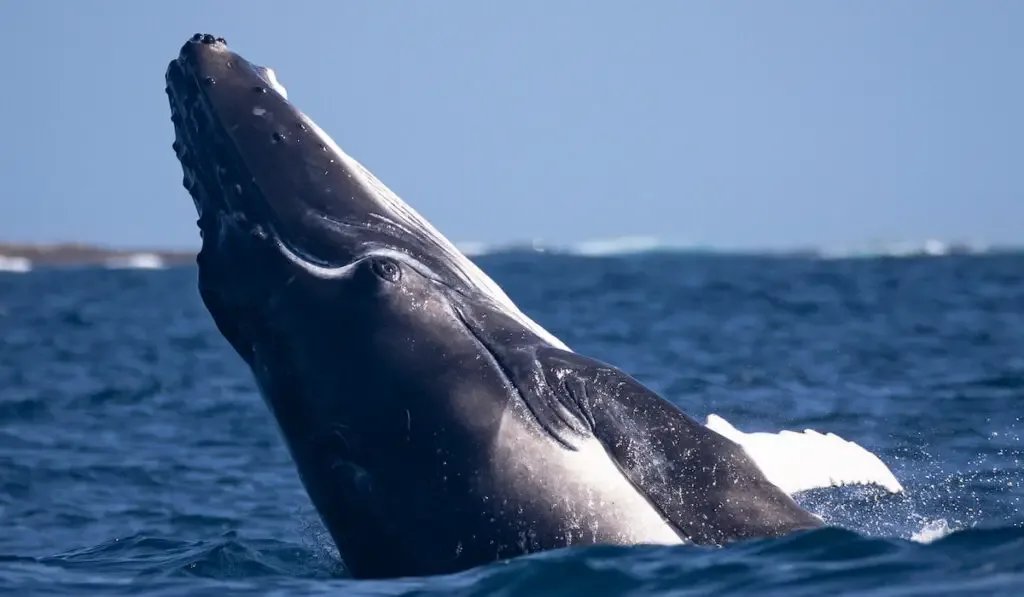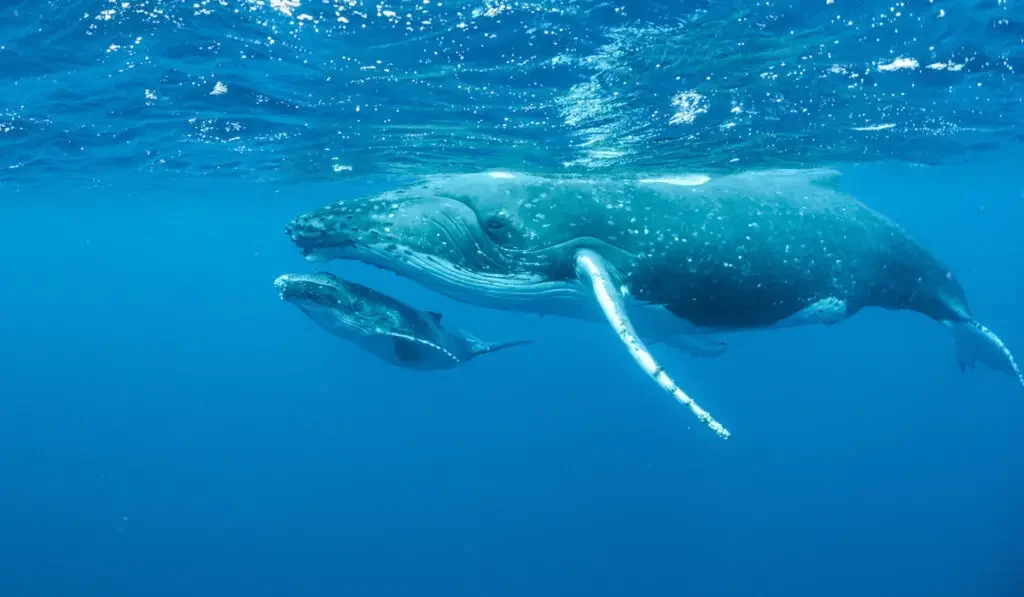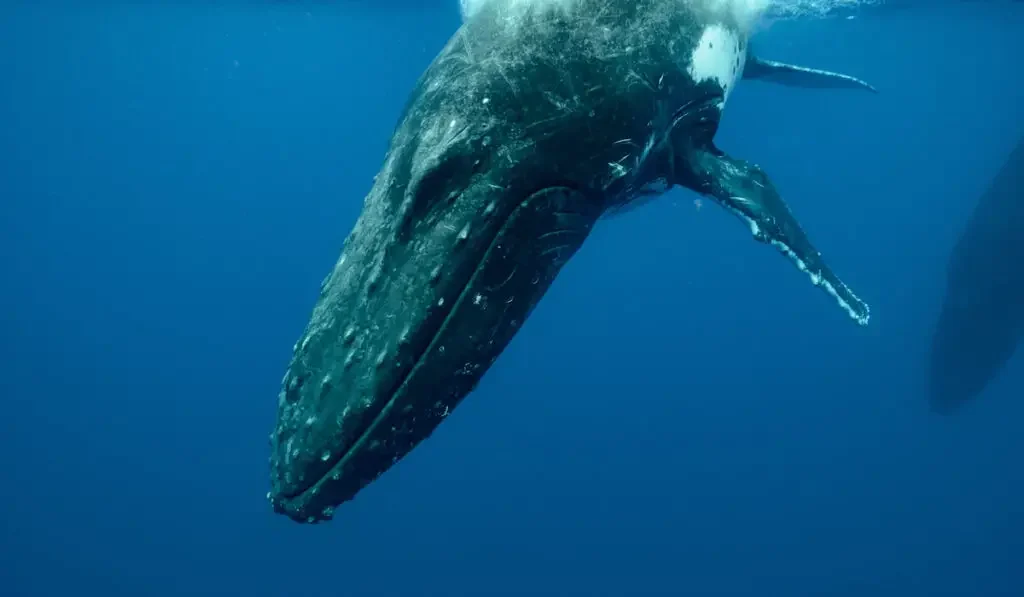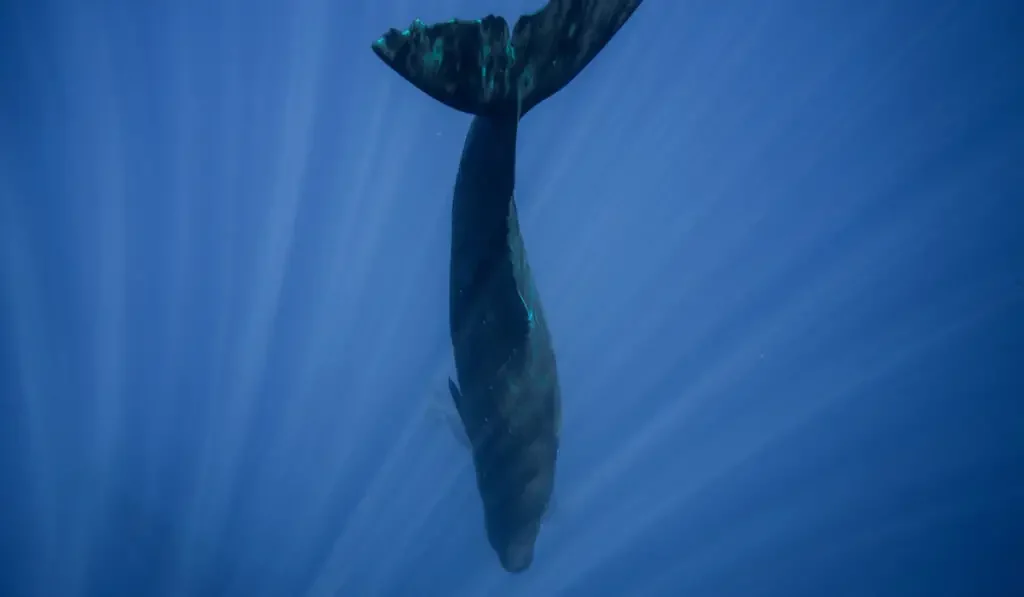Whales are fascinating and majestic animals that capture our imaginations. But just because they live in the ocean and seemingly share traits with fish and other aquatic animals does not mean they are similar.
How much do you know about whales and how they differ from other inhabitants of the sea?

Do whales lay eggs?
While they may seem similar to fish, whales are actually mammals just like humans, and they do not lay eggs. Instead, whales go through pregnancy and carry their unborn offspring until they are developed and born live naturally.
If this is new to you, you might be interested to learn other fun facts about whales.
Since they are mammals, what other similarities might they have with other mammals like us? Do whales share any commonalities with other ocean dwellers?
Table of Contents
Do Whales Lay Eggs?
Whales do not lay eggs. While they live in the ocean and seem similar to other aquatic animals, whales are not a type of fish. Whales are mammals that give birth to their young alive.
Whales are Mammals

As mammals, whales do not lay eggs. Mammals (with few exceptions such as Platypuses) do not lay eggs. Instead, they carry their unborn young to full term as a pregnancy and give birth to live offspring.
Whales are in the same family with dolphins and porpoises called the Cetacean family. They give birth a number of times throughout their lives and tend their young.
The number of offspring a whale has in its lifetime varies depending on the species. For example, humpback whales have a gestation period of 11-12 months and can give birth to one calve every 1-3 years.
The number of calves a mother whale can give birth in her lifetime depends on the graduation period and how long she lives.
5 Fun Facts About Whales
Here are cool facts about whales that will blow your mind.
1. Whales Breastfeed Their Young

The most common characteristic of mammals is their possession of mammary glands. The mammary glands of whales, however, do not look like those of mammals found on land.
For terrestrial mammals, their mammary glands have nipples that can protrude so that their young can suck them for milk.
In whales, their mammary glands do not protrude. Instead, they appear as slits.
Whale calves have to nudge and push into the glands for milk to come out. Whale calves also curl their tongues so that milk does not spill and get lost.
2. Whales Do Not Have Gills and Need Atmospheric Oxygen
A gill is an organ found in fish and other marine species that can collect dissolved oxygen from water.
However, mammals do not have gills; they require oxygen found in the atmosphere and cannot collect it from the water. Instead, mammals use their lungs to pull in oxygen.
As mammals, even though whales live in water, they need to come up sometimes to breathe. Whales have nostrils, called blowholes, that they use to breathe and gather oxygen into their lungs.
Most whales can hold their breath for 90 minutes before they need to come up to the water’s surface to collect more air.
3. Whales Are Classified Into Two Main Groups Based on Their Teeth

Not all whales have teeth. In fact, this trait is used to group whales into two classification groups: Baleen Whales and Toothed Whales
As their name suggests, toothed whales have teeth. They use their teeth to catch and chew their food. Examples of toothed whale species are:
- Iniidae
- Sperm whale
- Beaked whale
Unlike toothed whales, baleen whales lack teeth. Instead, they have a structure (made of keratin) in their mouth.
These whales feed through a filter-feeding system. When they are close to their prey, they suck water into their mouth, close the baleen and then push the water out.
Small animals such as krill and zooplankton that cannot pass through the baleen will remain stuck in the mouth and will serve as food for the baleen whale.
Examples of baleen whale species include:
- Fin whale
- Blue whale
- Grey whale
- Humpback whale
4. The Blue Whale Is the Largest Animal to Ever Live on Earth
Blue whales can grow more than 90 feet long and have a weight of more than 24 elephants. They remain the largest animals ever recorded to live on the earth.
While you may think that some dinosaur species could outclass a blue whale, we have yet to find any dinosaur fossils bigger than a blue whale.
5. Whales Sleep

Whales do sleep, but the way they sleep differs according to the species.
For example, some whales sleep vertically, some sleep by swimming slowly among other whales, and some sleep by floating on the surface of the water (this is known as logging).
The amount of sleep and how often whales sleep also depends on the species.
Whales are conscious breathers, which means that they have to decide when to breath. In contrast, humans are unconscious breathers, which means we can breathe without thinking about it.
One unique way that most whale species sleep is by shutting down half their brain, closing one eye, and sleeping.
Even though the animal is sleeping, it is still half conscious. After a while, it opens the eye, closes the other eye, and shuts down the other half of its brain while waking the other.
The unique method of sleeping found in whales and other cetaceans helps them to keep alarmed in the ocean while they sleep.
Final Thoughts
Whales do not lay eggs. Instead of laying eggs, whales give birth to live young. Whales are mammals, so they need to breathe atmospheric air, sleep, and give birth to their young.
